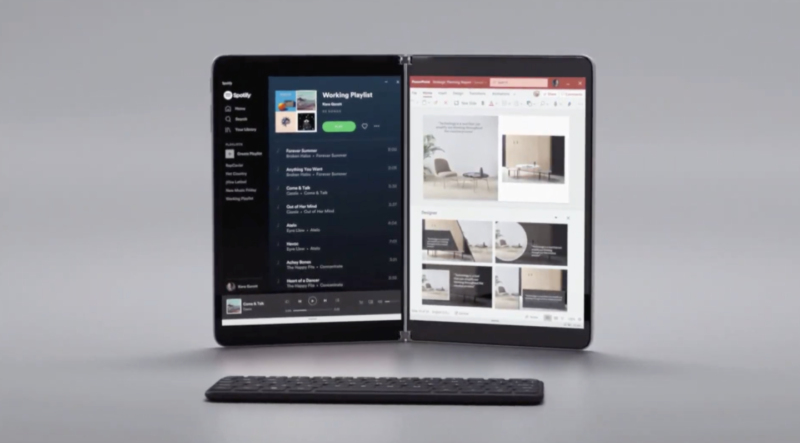
Microsoft
At its fall 2019 Surface event, Microsoft announced that Windows 10X—a new consumer Windows distribution—would power a line of dual-screened tablet devices in 2020. But the Surface Neo never arrived, and in May 2020, Microsoft Chief Product Officer Panos Panay retargeted Windows 10X to “single screen experiences.”
What was Windows 10X?
Microsoft’s original plan for the Windows variant was to “enable unique experiences on multi-posture dual-screen PCs.” This meant powering an entirely new class of devices—a hinged pair of touchscreens, which seemed to be trying to bridge the divide between tablet and notebook. In addition to Microsoft’s own Surface Neo, the company’s hardware partners—including Dell, Lenovo, and HP—were supposed to manufacture devices to the new specification.
But Microsoft nixed the Neo last year, and the talk of partner-manufactured 10X devices died along with it. The company’s new chief product officer, Panos Panay, declared that Microsoft “need[s] to focus on meeting customers where they are now”—which meant focusing on single-screen devices and interfaces again.
Panay did not go into great detail about his new plans for Windows 10X, but the distribution sounded like a probable competitor for Chromebooks—and probably for the company’s existing Windows 10 S-Mode, which cuts the OS down to bare minimums and restricts software installation in order to accommodate extremely cheap and low-powered devices.
Windows 10X joins Windows RT and Windows S
Now, sources within Microsoft tell Petri.com’s Brad Sams that Windows 10X won’t be shipping this year, either—and that 10X as we know it today “will likely never arrive.” Sams’ sources claim that Microsoft has shifted its resources back to Windows 10, leaving 10X abandoned for now.
The story arc of Windows 10X follows an established Microsoft pattern—the company has been trying to pare Windows down for smaller, less powerful devices for quite some time, with little success. Windows CE was the longest-lived attempt; the OS powered a series of unloved and undersold phones and handhelds from 1996 to 2013.
Windows RT was Microsoft’s next attempt, launched simultaneously with its equally unloved Windows 8 in 2012. Windows RT targeted 32-bit ARM processors—which meant no support for mainstream Windows software—and the new variant died on the vine, with only five devices ever built to support it. Despite its lack of hardware, Microsoft is still on the hook for extended support for Windows RT through 2023.
After Windows RT came Windows S. This time, Microsoft targeted both ARM and very low-powered x86 infrastructure. The major feature of Windows S is a refusal to allow the user to directly install third-party applications—only a limited set of applications can be installed on S, and only from the Microsoft Store.
This limitation, designed to keep underpowered PCs feeling snappy, was so wildly unpopular that Microsoft changed S to “S-Mode” in 2018, allowing free conversion to standard Windows 10 to anyone who purchases an S-Mode device.
Although Windows 10X seems to be joining CE, RT, and S on the scrap heap, that doesn’t necessarily mean its development was wasted effort. We expect to see elements of Windows 10X’s design show up in the Sun Valley refresh of Windows 10 later this year.



